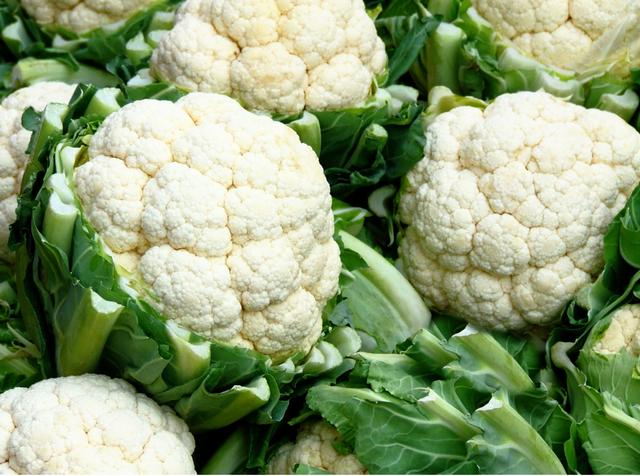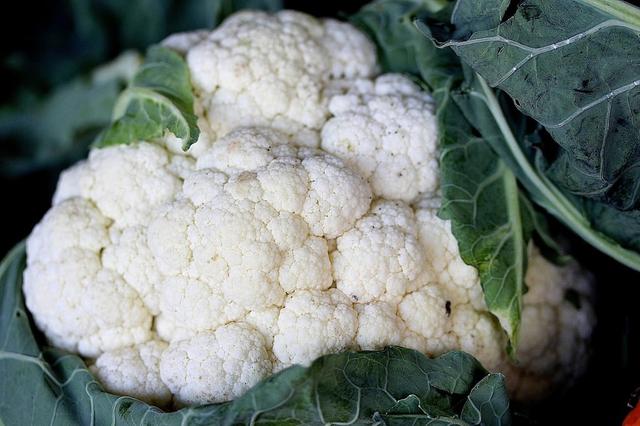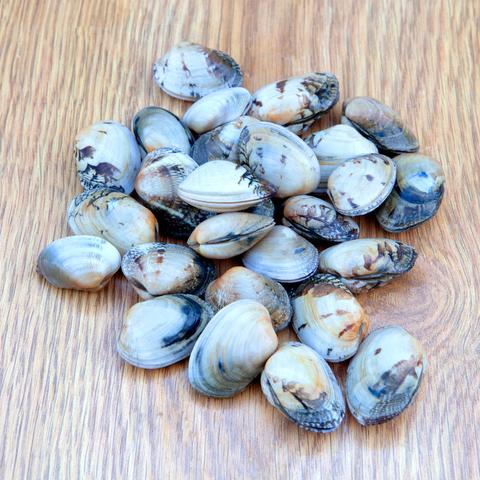
Curious about cauliflower’s flavor? Unlocking the mystery of this versatile vegetable, we delve into its unique taste profile. Discover if it is earthy, mild, or nutty, and explore how it transforms when cooked. Join us on a flavorful journey to understand what cauliflower truly tastes like!
1. Exploring the Flavor Profile of Cauliflower: What Does it Taste Like?
Cauliflower has a mild, slightly nutty flavor that is far from overpowering. It can be compared to the taste of plain, cooked, canned white beans. Raw cauliflower is often used in salads or served with dips like hummus or Ranch dressing to add some texture and crunch. However, when cauliflower is roasted, it brings out its natural sweetness and develops a toasty flavor. Steaming cauliflower maintains its neutral-ish flavor but softens the texture. Sauteeing cauliflower gives it a nice outer crispness while still maintaining a soft texture on the inside. The best part about cauliflower is that it takes on the flavors of any dish or spice you pair it with, making it versatile and easy to incorporate into various recipes.
While no vegetable can fully replace the flavor and texture of cooked cauliflower, zucchini comes close. Zucchini has a similar mild flavor and also has the ability to soak up flavors like cauliflower does. This is why both zucchini and cauliflower work well in dishes like chili where they blend in with meat and absorb all those delicious spices.
Whether cauliflower tastes better than broccoli is subjective and depends on personal preference. Some people find that roasted cauliflower has a more enjoyable taste than broccoli, while others prefer steamed and salted broccoli.
When it comes to seasoning cauliflower, there are endless possibilities. Some popular spices and herbs that go well with cauliflower include garlic, cumin, turmeric, paprika, thyme, rosemary, and parsley. The choice of seasoning will depend on how you plan to cook the cauliflower.
There are various methods for cooking cauliflower that bring out different flavors and textures. Making cauliflower rice by sautéing it will give it a buttery flavor. Roasting cauliflower florets in the oven creates tender florets with golden-crisp edges and caramelized flavor. Steaming cauliflower alone can be bland but adding butter (or olive oil), salt, and pepper will make it tender, savory, and almost melt in your mouth.
Overall, cauliflower is a versatile vegetable that can be enjoyed in many ways. Its mild flavor and ability to take on the flavors of other ingredients make it a great addition to various dishes.
2. Unveiling the Taste of Cauliflower: A Comprehensive Guide

Cauliflower is a versatile and nutritious vegetable that often gets a bad rap for being bland or tasteless. However, with the right preparation and seasoning, cauliflower can be transformed into a delicious and flavorful dish that even veggie skeptics will enjoy.
One of the main things to note about cauliflower is its mild, slightly nutty flavor. When eaten raw, it has a subtle taste that is far from overpowering. It can be compared to plain, cooked, canned white beans in terms of its mildness. This makes raw cauliflower a great addition to salads or as a dip for hummus or ranch dressing.
To enhance the flavor of cauliflower, different cooking methods can be used. Roasting cauliflower brings out its natural sweetness and gives it a toasty flavor. The florets become tender with golden-crisp edges and develop a caramelized flavor that is highly satisfying. A recipe to try for roasted cauliflower is Roasted Curried Cauliflower.
Steaming cauliflower maintains its neutral-ish flavor but softens the texture. Steamed cauliflower alone may be slightly bland, but when seasoned with butter (or olive oil), salt, and pepper, it becomes tender, savory, and almost melts in your mouth. A recipe to try for steamed cauliflower is Cauliflower Mac & Cheese.
Sauteeing cauliflower is another method that adds depth of flavor. By sauteeing it in olive oil with seasonings like garlic and herbs, the cauliflower absorbs these flavors and develops a nice outer crispness while maintaining a soft texture inside.
What makes cauliflower truly special is its ability to take on the flavors of any dish or spice it’s paired with. Whether you’re making curry or stir-fry, adding spices like cumin or turmeric, or using herbs like rosemary or thyme, cauliflower will readily absorb these flavors and enhance the overall taste of the dish.
If you’re looking for a vegetable that has a similar mild flavor and absorbs flavors well, zucchini is a good option. Like cauliflower, zucchini can blend in with other ingredients and soak up spices and seasonings. It can be used in dishes like keto chili or as a substitute for potatoes in mashed cauliflower recipes.
In terms of comparing cauliflower to broccoli, taste preferences may vary. Some people find that roasted cauliflower tastes better than broccoli, while others prefer steamed and salted broccoli. Both vegetables have their own unique flavors and textures, so it ultimately comes down to personal preference.
When it comes to seasoning cauliflower, the options are endless. Some popular choices include garlic powder, onion powder, paprika, cumin, turmeric, rosemary, thyme, and lemon zest. These spices and herbs can be used individually or combined to create a flavor profile that suits your taste buds.
Overall, cauliflower is a versatile vegetable that can be enjoyed in various ways depending on your preferred cooking method and seasonings. Whether you’re roasting it for caramelized goodness or steaming it for a tender texture, cauliflower has the potential to taste great when paired with the right flavors. So don’t hesitate to give it a try and explore the many possibilities of this nutritious veggie!
3. From Bland to Delicious: Understanding the Taste of Cauliflower
Cauliflower is often misunderstood as a bland and flavorless vegetable, but with the right cooking techniques and seasonings, it can be transformed into a delicious and versatile ingredient.
One way to enhance the taste of cauliflower is by roasting it. Roasting brings out the natural sweetness of cauliflower and gives it a toasty flavor. Simply toss cauliflower florets with olive oil, seasonings, and salt, then roast in the oven at 400F for about 20 minutes until golden brown and tender. The result is tender florets with crispy edges and a caramelized flavor that will make you crave more.
Steaming is another method that maintains the neutral-ish flavor of cauliflower while softening its texture. Steamed cauliflower alone may be bland, but when seasoned with butter or olive oil, salt, and pepper, it becomes tender, savory, and almost melts in your mouth. This method is great for preserving the nutritional value of cauliflower while adding some subtle flavors.
If you’re looking for a low-carb substitute for rice or grains, cauliflower rice is an excellent option. You can make cauliflower rice by processing raw cauliflower florets in a food processor or grating them with a cheese grater. Sautéing cauliflower rice will give it a buttery flavor, while steaming will make it super tender but less flavorful due to its high moisture content. Roasting cauliflower rice creates a great base for low-carb burrito bowls.
When it comes to seasoning cauliflower, the possibilities are endless. Some popular spices and herbs that go well with cauliflower include garlic powder, cumin, paprika, turmeric, thyme, rosemary, and parsley. The choice of seasoning depends on how you plan to cook the cauliflower. If roasting or sautéing, toss the florets with your preferred spices and a neutral oil. If steaming, keep the seasonings simple to avoid overpowering flavors.
Overall, cauliflower has a mild, slightly nutty flavor that can be enhanced and transformed through various cooking methods and seasonings. Whether you roast it to bring out its natural sweetness or steam it for a tender texture, cauliflower is a versatile vegetable that can adapt to any dish or spice. So don’t hesitate to give cauliflower a try and discover how you can make it taste great!
4. Demystifying Cauliflower’s Flavor: What to Expect When You Bite In
Cauliflower has a mild, slightly nutty flavor that is far from overpowering. It can be compared to the taste of plain, cooked, canned white beans. Raw cauliflower is often used in salads and paired with dressings or dips to enhance its flavor.
When roasted, cauliflower develops a natural sweetness and a toasty flavor. This method brings out the best in cauliflower and gives it a tender texture with crispy edges.
Steaming cauliflower maintains its neutral-ish flavor but softens the texture. It can be seasoned with butter or olive oil, salt, and pepper to add savory notes and create a melt-in-your-mouth experience.
Sauteeing cauliflower provides a nice outer crispness while softening the texture inside. It allows the flavors of olive oil, seasonings, and garlic to infuse into the vegetable.
One of the great things about cauliflower is that it takes on the flavors of any dish or spice you pair it with. This versatility makes it easy to incorporate into various recipes and customize its taste according to your preferences.
While no vegetable can completely replicate the flavor or texture of cooked cauliflower, zucchini comes close due to its mild taste and ability to absorb flavors similarly. Potatoes are also considered a good substitute for cauliflower in dishes like mashed potatoes.
The choice between cauliflower and broccoli ultimately depends on personal preference. Many people find that roasted cauliflower tastes better than broccoli, while steamed and salted broccoli is favored by others.
To enhance the flavor of cauliflower, there are numerous spices, seasonings, and herbs that pair well with it. Some popular choices include garlic powder, cumin, paprika, turmeric, thyme, rosemary, and parsley. The seasoning should be adjusted based on the cooking method used for cauliflower.
Here are three different ways you can cook cauliflower with a brief description of the overall flavor and a recipe to try:
1. Cauliflower Rice: Sautéed cauliflower rice has a buttery flavor, while steamed cauliflower rice is tender but less flavorful. Roasted cauliflower rice makes an excellent base for low-carb burrito bowls.
Recipe to try: Cilantro Lime Cauliflower Rice
2. Roasted Cauliflower: This method gives cauliflower a tender texture with golden-crisp edges and a caramelized flavor.
Recipe to try: Roasted Curried Cauliflower
3. Steamed Cauliflower: Steamed cauliflower alone can be bland, but when seasoned with butter (or olive oil), salt, and pepper, it becomes tender, savory, and almost melts in your mouth.
Recipe to try: Cauliflower Mac & Cheese
Overall, cauliflower is a versatile vegetable with a mild taste that can be enhanced by various cooking methods and seasonings. Don’t be afraid to experiment and find your favorite way to enjoy this nutritious veggie!
5. Cauliflower’s Taste Revealed: Mild, Nutty, and Versatile

Cauliflower is a cruciferous vegetable that belongs to the same family as broccoli, Brussels sprouts, and cabbage. It is known for its mild, slightly nutty flavor that is far from overpowering. Raw cauliflower can be compared to plain, cooked white beans in terms of taste. It is a little bland on its own but can be enhanced by adding dressings or dips such as hummus or Ranch.
Roasting cauliflower brings out its natural sweetness and gives it a toasty flavor. The florets become tender with crisp edges and develop a caramelized taste when roasted. Steaming cauliflower maintains its neutral-ish flavor but softens the texture. Adding butter or olive oil, salt, and pepper to steamed cauliflower enhances its taste and makes it savory.
One of the best things about cauliflower is its ability to take on the flavors of any dish or spice. Whether you roast, steam, or sauté it, cauliflower can absorb the flavors you put on the pan or mix with it. This versatility allows you to experiment with different seasonings and spices to create delicious cauliflower dishes.
If you are looking for a vegetable that has a similar mild flavor and ability to soak up flavors like cauliflower, zucchini would be a good choice. Zucchini can blend well with meat and absorb various spices and flavors just like cauliflower does. Potatoes also have a similar texture to cooked cauliflower and can be used as a substitute in dishes like mashed potatoes.
In terms of taste preference between cauliflower and broccoli, it varies from person to person. Some people find that roasted cauliflower tastes better than broccoli, while others prefer steamed and salted broccoli.
When cooking cauliflower, there are endless possibilities for seasoning it to enhance its flavor. Some popular spices and herbs that go well with cauliflower include garlic powder, cumin, turmeric, paprika, thyme, rosemary, and parsley. The choice of seasoning depends on the cooking method used.
To make cauliflower rice, you can sauté it for a buttery flavor or steam it for a tender but less flavorful result. Roasting cauliflower florets in the oven gives them a tender texture with golden-crisp edges and caramelized flavor. Steamed cauliflower can be seasoned with butter or olive oil, salt, and pepper to enhance its taste.
Overall, cauliflower has a mild and slightly nutty flavor that can be enhanced by various cooking methods and seasonings. Its versatility allows it to blend well with other ingredients and take on different flavors. Whether you are a veggie lover or not, there are plenty of ways to make cauliflower taste great and incorporate it into your meals.
6. Unlocking the Secrets of Cauliflower’s Flavor Profile
Cauliflower is often seen as a bland and unexciting vegetable, but with the right cooking techniques and seasonings, it can be transformed into a delicious and flavorful dish. Understanding the flavor profile of cauliflower is key to unlocking its full potential in the kitchen.
One of the main characteristics of raw cauliflower is its mild, slightly nutty flavor. It is not overpowering or pungent like some other vegetables. In fact, raw cauliflower can be compared to plain, cooked white beans in terms of taste. It serves as a blank canvas that readily absorbs the flavors of any dish or spice it is paired with.
When cooked, cauliflower takes on different flavors depending on the method used. Roasting cauliflower brings out its natural sweetness and gives it a toasty flavor. The florets become tender with golden-crisp edges and develop a caramelized taste. This method is highly recommended for those who want to enhance the flavor of cauliflower.
Steaming cauliflower maintains its neutral-ish flavor but softens the texture. It becomes tender and almost melts in your mouth when seasoned with butter (or olive oil), salt, and pepper. Steamed cauliflower pairs well with other ingredients in recipes such as Cauliflower Mac & Cheese.
Sauteeing cauliflower not only softens the texture inside but also gives it a nice outer crispness. This method allows you to infuse flavors into the vegetable by adding ingredients like olive oil, seasonings, and garlic directly to the pan. The result is a flavorful dish that can be enjoyed on its own or incorporated into various recipes.
In terms of taste comparison, no other vegetable can fully replace the flavor or texture of cooked cauliflower. However, if we had to choose one similar vegetable, zucchini would come close due to its mild flavor and ability to soak up other flavors like cauliflower does. Potatoes also have a similar texture and can be used as a substitute for cauliflower in dishes like mashed potatoes.
To enhance the flavor of cauliflower, there are endless spices, seasonings, and herbs that can be used. Some popular options include garlic powder, onion powder, cumin, paprika, turmeric, and curry powder. These spices add depth and complexity to cauliflower dishes.
In conclusion, cauliflower has a mild, slightly nutty flavor when raw and serves as a blank canvas that takes on the flavors of any dish or spice it is paired with. Roasting brings out its natural sweetness and caramelizes the florets. Steaming maintains its neutral-ish flavor but softens the texture. Sauteeing allows for flavor infusion and crispness. While no vegetable can fully replace the taste of cooked cauliflower, zucchini comes close due to its mild flavor and ability to soak up other flavors. Experimenting with different spices and seasonings is key to making cauliflower taste great in various recipes.
7. The Surprising Taste of Cauliflower: Mild, Nutty, and Perfectly Versatile

Cauliflower is a cruciferous vegetable that belongs to the same family as broccoli, Brussels sprouts, and cabbage. It is highly nutritious, packed with vitamin C and low in calories. Despite its various colors, including white, orange, purple, and light green, all cauliflowers taste the same.
When eaten raw, cauliflower has a mild and slightly nutty flavor. It can be compared to plain cooked canned white beans in terms of taste. Due to its relatively bland flavor on its own, raw cauliflower is often used in salads or paired with dressings or dips like hummus or Ranch.
To bring out the natural sweetness and add a toasty flavor to cauliflower, roasting is an excellent cooking method. Roasted cauliflower has a tender texture with golden-crisp edges and caramelized flavors. Steaming cauliflower maintains its neutral-ish flavor but softens the texture. Sauteeing cauliflower not only softens the texture inside but also gives it a nice outer crispness while absorbing the flavors from seasonings and spices.
One of the best things about cauliflower is its ability to take on the flavors of any dish or spice it’s cooked with. This versatility allows for endless possibilities when it comes to seasoning and preparing cauliflower dishes.
While no vegetable can perfectly replicate the taste and texture of cooked cauliflower, zucchini comes close due to its mild flavor and ability to absorb other flavors. Potatoes are also considered a close second since many people use cauliflower as a substitute in dishes like mashed potatoes.
In terms of comparison with broccoli, whether cauliflower tastes better than broccoli is subjective and depends on individual preferences. Many people find that roasted cauliflower has a more enjoyable taste compared to roasted broccoli. However, when steamed and salted, broccoli tends to be favored over steamed cauliflower.
When it comes to seasoning cauliflower, the options are endless. Some popular choices include garlic, olive oil, herbs like cilantro or parsley, and spices such as curry powder or cumin. The cooking method used will determine how the cauliflower should be seasoned.
For example, if roasting cauliflower, it is best to toss it with a neutral oil, choice of seasoning, and salt. If steaming cauliflower, it is recommended to keep the seasonings simple to avoid overpowering flavors.
There are several delicious ways to cook cauliflower that will have everyone asking for seconds. Cauliflower rice can be made by sautéing or steaming grated cauliflower and can be flavored with butter or other seasonings. Roasted cauliflower has a tender texture with caramelized flavors and can be seasoned with various spices. Steamed cauliflower can be transformed into a creamy dish like Cauliflower Mac & Cheese when seasoned with butter, salt, and pepper.
In conclusion, cauliflower has a mild and slightly nutty flavor that pairs well with a variety of seasonings and spices. Its versatility in cooking methods allows for different textures and tastes. Whether you’re roasting, steaming, or sautéing cauliflower, it can be transformed into a delicious dish that even veggie skeptics will enjoy.
References:
– https://www.tasteofhome.com/article/what-does-cauliflower-taste-like/
– https://www.healthline.com/nutrition/cauliflower-benefits
8. Discovering the Delicate Flavors of Cauliflower: What You Need to Know
Cauliflower is a versatile and nutritious vegetable that often gets overlooked. However, once you understand its delicate flavors and how to enhance them, you’ll be eager to incorporate it into your meals.
The Mild and Nutty Flavor of Raw Cauliflower
Raw cauliflower has a mild, slightly nutty flavor that is far from overpowering. It can be compared to the taste of plain, cooked, canned white beans. While some may find it slightly bland on its own, raw cauliflower shines when paired with dressings or dips like hummus or Ranch. Its neutral taste allows it to absorb the flavors of any dish or spice it is combined with.
Enhancing Flavor through Roasting
Roasting cauliflower brings out its natural sweetness and gives it a toasty flavor. This method involves placing cauliflower florets on a baking sheet, drizzling them with olive oil and seasonings of your choice, then roasting them in the oven until golden brown and tender. The result is tender florets with crispy edges and a caramelized flavor.
Steaming for Tender and Savory Cauliflower
Steaming cauliflower maintains its neutral-ish flavor while softening the texture. To steam cauliflower, simply cut it into florets and place them in a microwave-safe dish with about 1 inch of water. Cover the dish with plastic wrap and microwave for 4 minutes or until the cauliflower is tender. Steamed cauliflower can be enhanced by seasoning it with butter (or olive oil), salt, and pepper.
Cauliflower Rice: A Low-Carb Alternative
Cauliflower rice has gained popularity as a low-carb substitute for grains. It can be made by processing cauliflower florets in a food processor or grating them with a cheese grater. Cauliflower rice can be sautéed for a buttery flavor, steamed for tenderness, or even roasted to serve as a base for low-carb burrito bowls.
Pairing Cauliflower with Spices and Seasonings
Cauliflower’s ability to absorb flavors makes it a great canvas for various spices and seasonings. When roasting cauliflower, you can toss it with a neutral oil, your choice of seasoning, and salt. For steamed cauliflower, it’s best to keep the seasonings simple to avoid overpowering the delicate flavors. Some popular spice combinations include curried cauliflower, cilantro lime cauliflower rice, and cauliflower mac & cheese.
In conclusion, cauliflower has a mild and slightly nutty flavor that can be enhanced through different cooking methods and seasonings. Whether you choose to roast, steam, or make cauliflower rice, this versatile vegetable is sure to please your taste buds. So go ahead and give it a try in your next meal!
9. A Closer Look at Cauliflower’s Flavor: Mild, Nutty, and Easily Enhanced

Cauliflower has a mild, slightly nutty flavor that is not overpowering. It can be compared to the taste of plain, cooked, canned white beans. This mild flavor makes cauliflower a versatile vegetable that can be easily enhanced with various seasonings and spices.
When cauliflower is raw, it is often chopped up and added to salads or served with dips like hummus or Ranch. The raw cauliflower adds a crunchy texture and subtle flavor to these dishes.
Roasting cauliflower brings out its natural sweetness and gives it a toasty flavor. The florets become tender with golden-crisp edges, creating a delicious combination of textures. Roasted cauliflower can be seasoned with olive oil, seasonings, and garlic for added flavor.
Steaming cauliflower maintains its neutral-ish flavor but softens the texture. It can be seasoned with butter or olive oil, salt, and pepper to enhance its taste. Steamed cauliflower becomes tender, savory, and almost melts in your mouth.
Sauteeing cauliflower softens the texture inside while giving it a nice outer crispness. The flavors from the pan, such as olive oil, seasonings, and garlic, are absorbed by the cauliflower during sauteeing. This method allows you to customize the flavors according to your preference.
Regardless of how you cook it, one of the best things about cauliflower is that it takes on the flavors of any dish or spice. This versatility allows you to make it taste great by pairing it with different ingredients and seasonings.
While no vegetable can fully replace the flavor or texture of cooked cauliflower, zucchini comes close in terms of its mild flavor and ability to soak up other flavors. Zucchini can be used in similar ways as cauliflower in recipes like keto chili where it blends in with meat and absorbs all the spices and broth.
Potatoes also have a similar taste to cooked cauliflower when used as a substitute in dishes like mashed potatoes. Many people find roasted cauliflower to taste better than broccoli, while steamed and salted broccoli is often favored. The preference between cauliflower and broccoli ultimately depends on personal tastes.
There are endless spices, seasonings, and herbs that pair well with cauliflower. Some popular options include garlic powder, cumin, turmeric, paprika, thyme, rosemary, and lemon zest. These seasonings can be added when roasting or sauteeing cauliflower to enhance its flavor.
Overall, cauliflower has a mild and slightly nutty flavor that can be easily enhanced with various cooking methods and seasonings. Its versatility allows it to be used in a wide range of dishes as a low-carb substitute for grains or as a standalone vegetable.
10. Cracking the Code on Cauliflower’s Taste: Mild, Nutty, and Adaptable to Any Dish
Cauliflower has a mild, slightly nutty flavor that is far from overpowering. It can be compared to the taste of plain, cooked, canned white beans. Raw cauliflower is often used in salads and paired with dressings or dips like hummus or Ranch to add more flavor. Roasting cauliflower brings out its natural sweetness and gives it a toasty flavor. Steaming cauliflower maintains its neutral-ish flavor but softens the texture. Sauteeing cauliflower softens the texture inside while giving it a nice outer crispness and allowing it to take on the flavors of the cooking oil, seasonings, and garlic.
While no vegetable can fully replace the taste and texture of cooked cauliflower, zucchini comes close in terms of its mild flavor and ability to absorb other flavors. Zucchini and cauliflower blend well with meat and spices in dishes like keto chili. Potatoes are also a close second as they can be substituted with cauliflower to make mashed potatoes that taste similar to the classic southern dish.
Cauliflower pairs well with a variety of spices, seasonings, and herbs. Some popular options include garlic powder, cumin, paprika, turmeric, curry powder, rosemary, thyme, and parsley. The method of cooking will determine how the cauliflower should be seasoned. For roasting, toss it with a neutral oil, choice of seasoning, and salt if needed. When steaming cauliflower, it’s best to keep the seasonings simple as cooking them too long may result in overpowering or bitter flavors.
There are several delicious ways to prepare cauliflower that will have everyone asking for seconds. Cauliflower rice can be made by sautéing or steaming grated cauliflower for a buttery or tender flavor respectively. Roasting cauliflower in the oven gives it a tender texture with golden-crisp edges and caramelized flavor. Steamed cauliflower can be seasoned with butter (or olive oil), salt, and pepper for a savory and melt-in-your-mouth experience.
Overall, cauliflower has a mild, nutty taste that can be enhanced by various cooking methods and seasonings. It is a versatile vegetable that can be used as a low-carb substitute for grains or as a side dish in many different recipes.
11. Decoding the Flavor of Cauliflower: Mild, Nutty, and Ready for Your Culinary Adventures
Cauliflower is a versatile and nutritious vegetable that belongs to the cruciferous family. It shares similarities with broccoli, Brussels sprouts, and cabbage. Despite its plain appearance, cauliflower packs a nutritional punch, with high levels of vitamin C and low calorie content. The classic white cauliflower is the most common variety, but it can also be found in orange, purple, and light green colors.
When consumed raw, cauliflower has a mild and slightly nutty flavor that is not overpowering. It can be compared to plain cooked white beans in terms of taste. Due to its relatively neutral flavor profile, raw cauliflower is often used in salads or served with dips like hummus or Ranch dressing.
However, cooking methods can greatly enhance the flavor of cauliflower. Roasting brings out its natural sweetness and adds a toasty flavor to the florets. Steaming maintains the neutral-ish flavor while softening the texture. Sauteeing gives cauliflower a nice outer crispness while allowing it to absorb flavors from ingredients like olive oil, seasonings, and garlic.
One of the best things about cauliflower is its ability to take on the flavors of other ingredients or spices used in a dish. This makes it incredibly versatile for various culinary creations.
While no vegetable can completely replicate the taste and texture of cooked cauliflower, zucchini comes close due to its mild flavor and ability to absorb flavors similar to cauliflower. Potatoes are also mentioned as they can be used as a substitute for making dishes like mashed potatoes using cauliflower.
The preference between cauliflower and broccoli comes down to personal taste. Some people find roasted cauliflower more enjoyable than broccoli while others prefer steamed broccoli when seasoned with salt.
There are countless spices, seasonings, and herbs that pair well with cauliflower. The choice of seasoning depends on how you plan to prepare the cauliflower. For roasting, a neutral oil, choice of seasoning, and salt are typically used. Steamed cauliflower benefits from simple seasonings to avoid overpowering or bitter flavors.
Three popular cooking methods for cauliflower are highlighted: cauliflower rice, roasted cauliflower, and steamed cauliflower. Cauliflower rice can be sautéed for a buttery flavor or lightly salted when steamed. Roasted cauliflower offers a tender texture with golden-crisp edges and caramelized flavor. Steamed cauliflower becomes savory and tender when seasoned with butter (or olive oil), salt, and pepper.
Overall, cauliflower is a versatile vegetable that can be enjoyed in various dishes. Its mild and nutty flavor makes it adaptable to different seasonings and cooking methods. Whether you’re a veggie lover or someone hesitant to try new vegetables, give cauliflower a chance – it might surprise you with its delicious taste!
In conclusion, cauliflower has a mild and slightly nutty flavor with a subtle sweetness. Its versatile taste allows it to be used in various dishes and cooking methods, making it a popular choice among both veggie lovers and those looking to try new flavors. Whether roasted, steamed, or mashed, cauliflower offers a unique taste that can complement a wide range of cuisines.
Learn More About Grilling
If you want to learn more about grilling, check out these other helpful resources!






